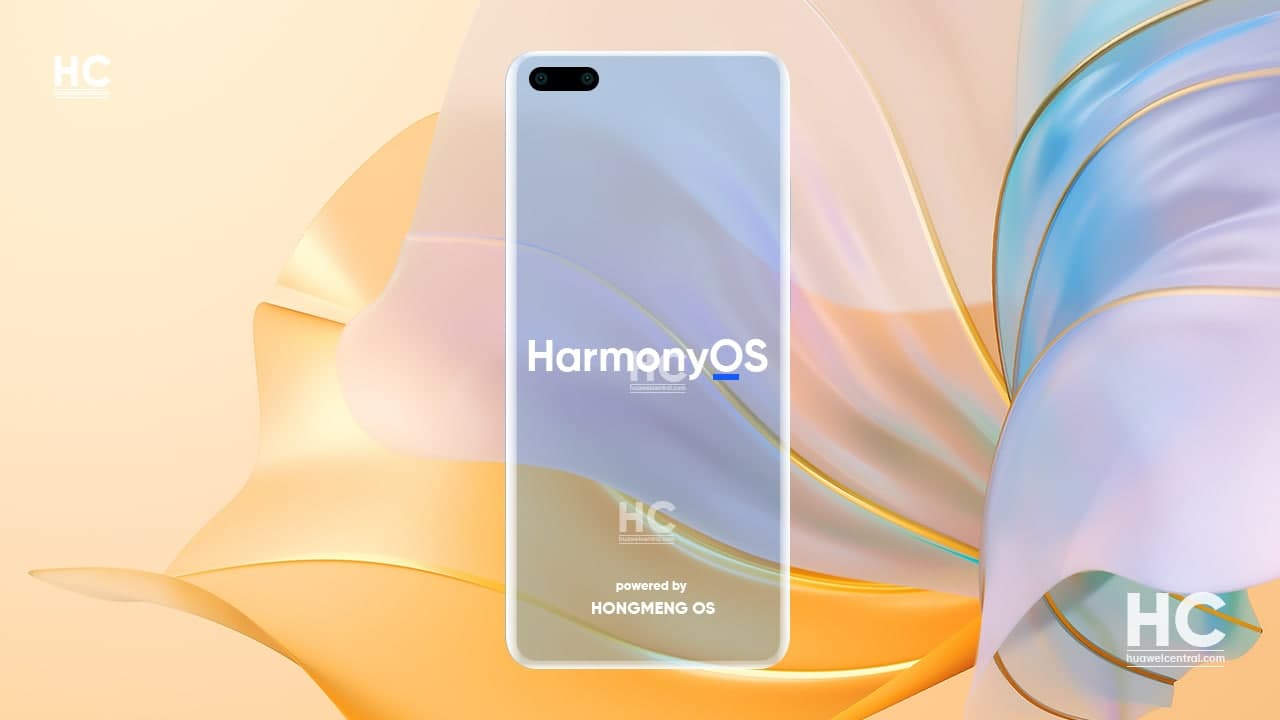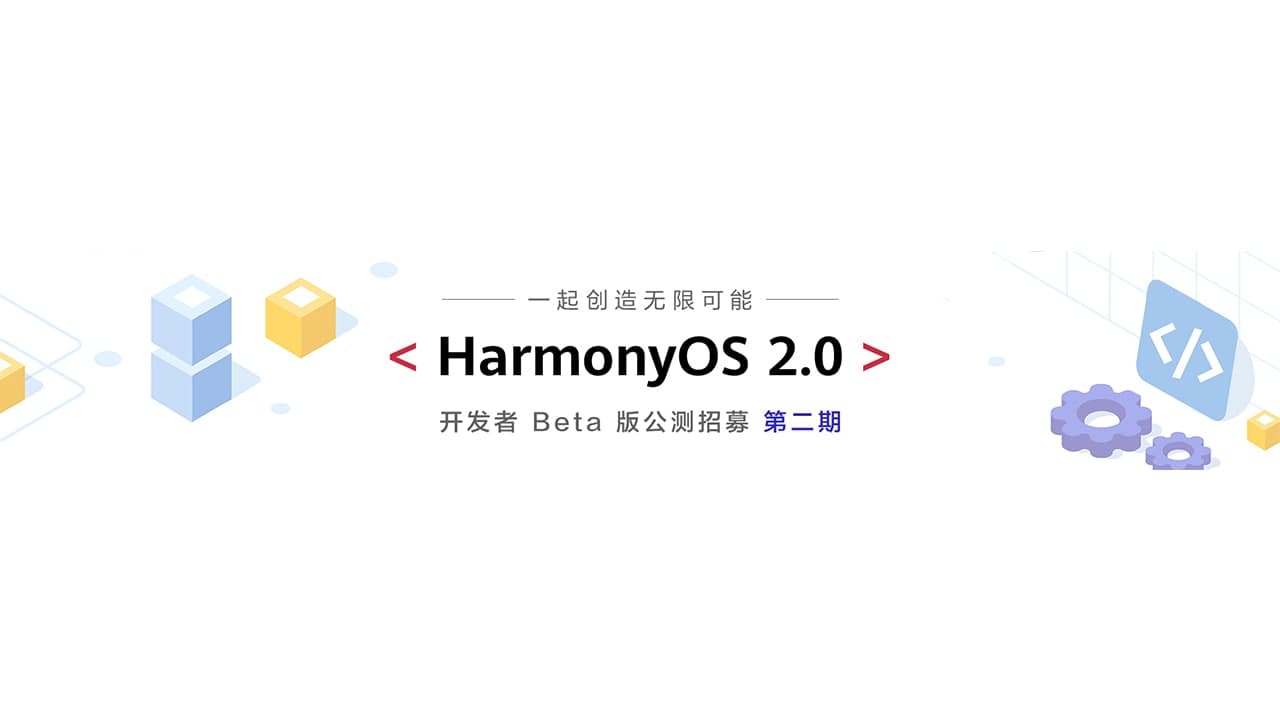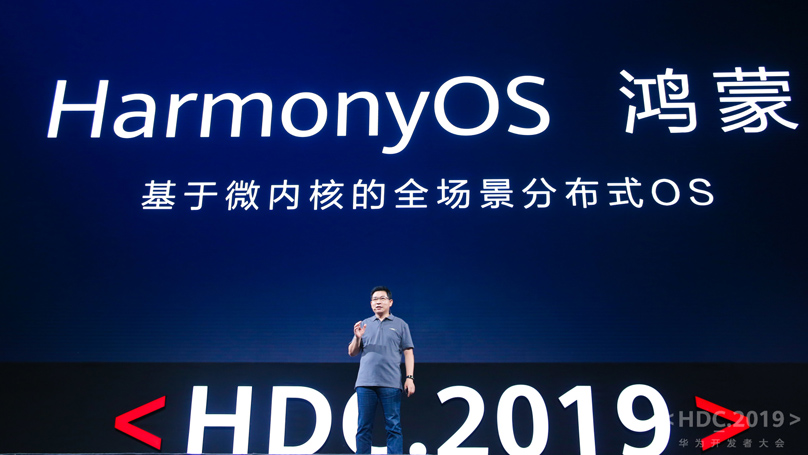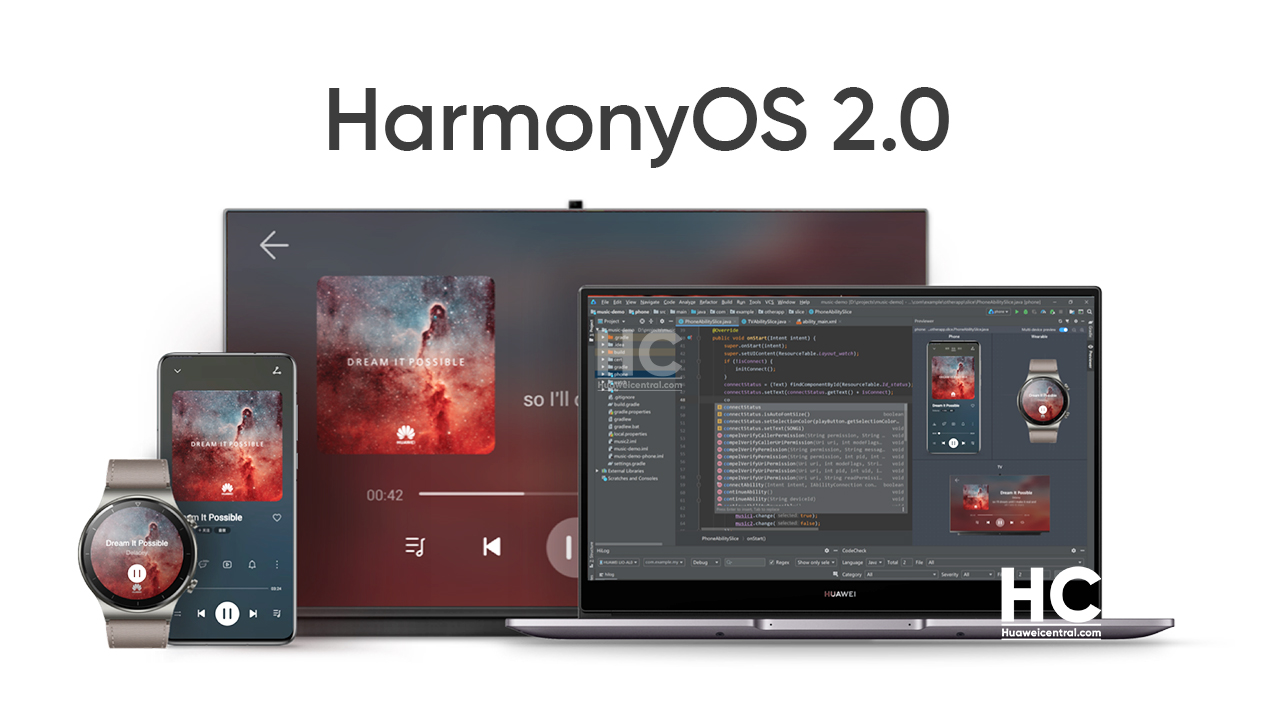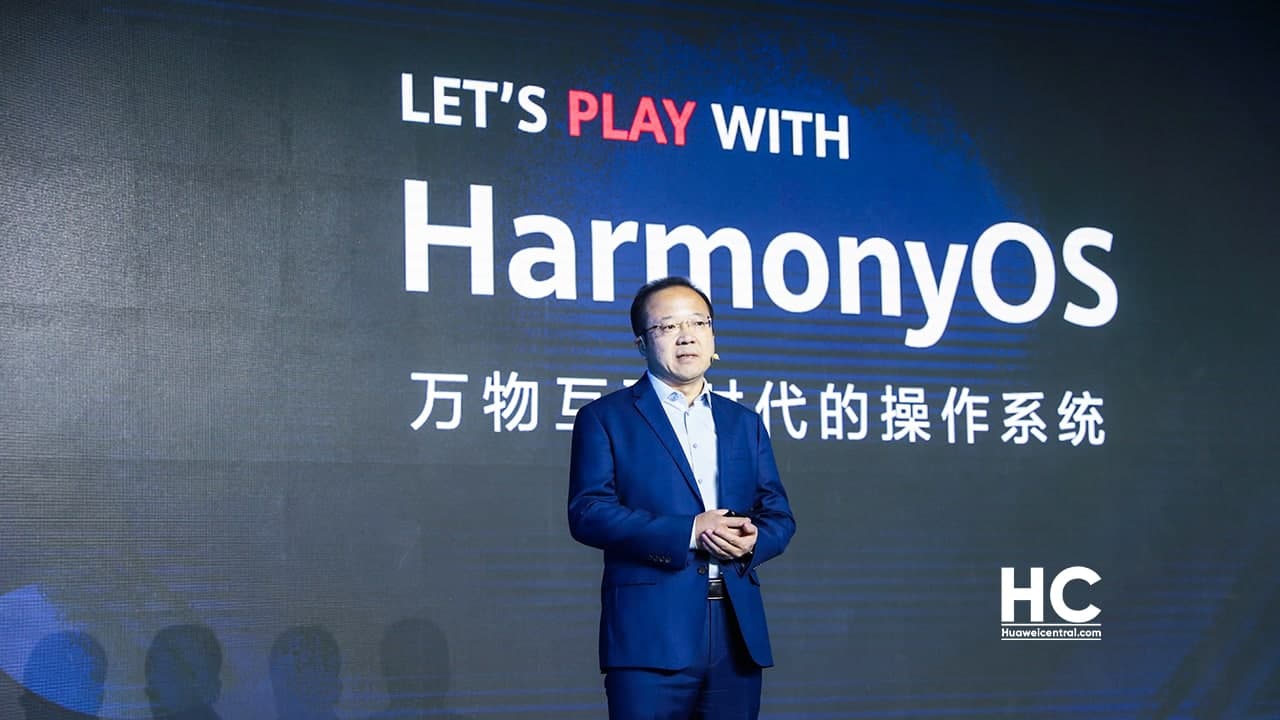HarmonyOS
HarmonyOS is a new life for Huawei smartphones and other devices (First Edition)
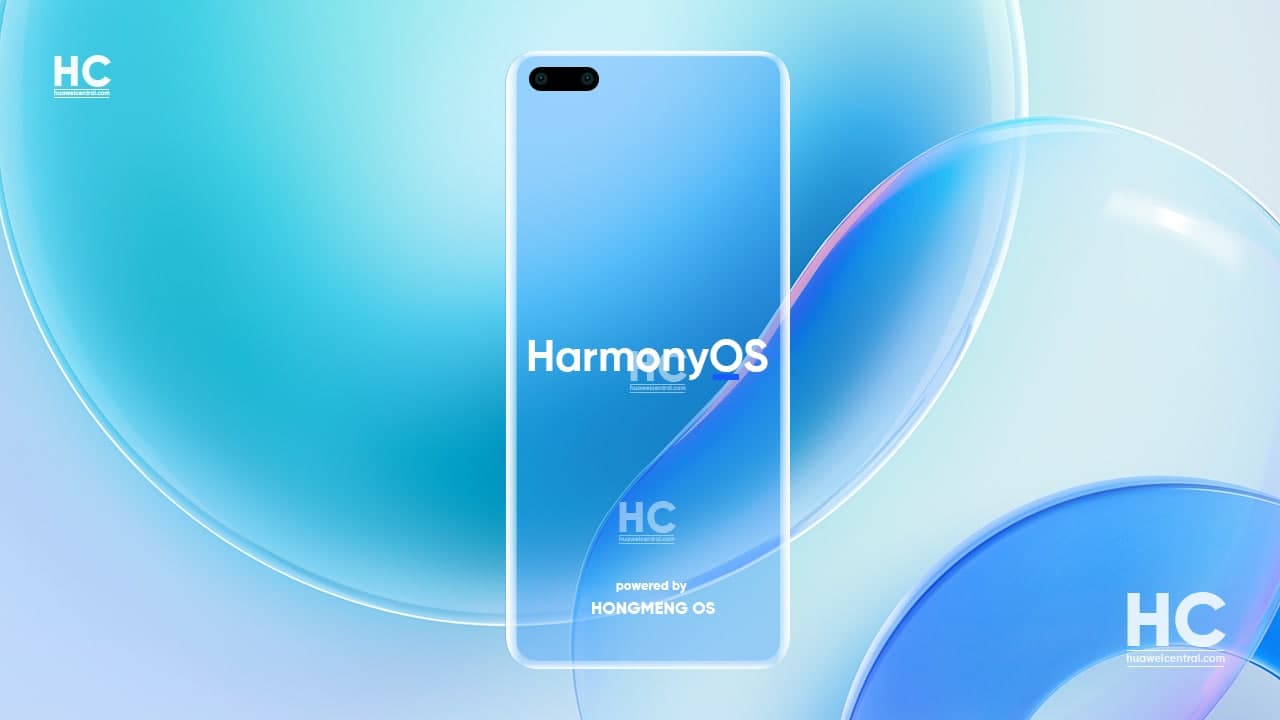
In December 2020, Huawei began testing HarmonyOS 2.0 Mobile developer beta on smartphones. These first batch of beta devices are Huawei P40, Mate 30, and MatePad Pro series, models.
Since it’s a continuous process, Huawei kept the program swinging with the launch and release of new beta software updates that added new API support as well other important features for the developers to make applications and understand the IDE environment of the HarmonyOS.
In April, Huawei opened new slots for the testers, under the Developer Open Beta testing campaign that allowed more people to register their eligible devices and get the HarmonyOS 2.0 developer beta build.
The first round of HarmonyOS 2.0 developer open beta software recruitment consists of Huawei Mate X2, Huawei Mate 40 series, Huawei Smart Screen S, and other important flagships.
On May 9, Huawei further expanded the testing pool with the announcement of the second phase of HarmonyOS 2.0 developer open beta activity. These devices come from Huawei Nova 6, Nova 7, and Nova 8 lineup, and there’s the MatePad 10.8 tablet that also became part of this testing program.
Following the recruitment, all of the enrolled testers received the HarmonyOS 2.0 developer open beta build through OTA software update. These new changes are clearly visible on the user interface of the software that is well appreciated and loved by the consumers who’ve got the chance to test it.
Furthermore, this system software completely supports the GMS (Google Mobile Services) in all regards. So, those who are confused about this can easily upgrade their handsets from EMUI to HarmonyOS because it still supports Android applications for now.
Birth of HarmonyOS:
After the US accused Huawei of spying on their consumers’ data, the European country put a ban on Huawei and restricted the US-based companies from doing business with Huawei. As a result, Google had to pull back the support of Android OS from Huawei’s smartphone, and the overseas users started struggling with the GMS Services.
In order to solve this problem, Huawei seeking for a permanent solution and started developing HarmonyOS and Huawei Mobile Services (HMS), which currently has over 1.6 million developers around the globe and cross-device services reaching 700 million users monthly active users.
At the annual conference of Huawei- HDC 2019 (Huawei Developer Conference), this Chinese tech firm introduced the HarmonyOS featuring supporting distributed capabilities. In the following year, at HDC 2020 the Chinese tech giant announced HarmonyOS 2.0 with new platform support: Smartphones, tablets, smart wearables, IoT devices, home appliances, and other third-party device makers.
HarmonyOS 2.0 mobile developer beta features:
As the fully independent system software, we surely expecting many changes and new features in the UI as well as features of the HarmonyOS. The company also didn’t disappoint us and installed a full house of changes and features with this new update.
The features and changes list includes-
- New animations
- Homescreen decoration
- New card system with round corners
- Resizable widgets
- App transitions
- App icon swipe up gesture
- Camera app layout
- Quick setting panel
- New apps: Youku, Sina News, and CCTV
- Fixes the problem of inaccurate display of exercises and health steps
- Improve Smart Assistant
Still, there’s more to come with the stable rollout. (Read more here)
HarmonyOS Vs EMUI 11:
As this Chinese tech firm gradually expanding HarmonyOS 2.0 mobile open beta activity for other smartphones, users are experiencing various changes in their eligible smartphones. Related to this, users and tipsters start sharing their experience with both system software in terms of many aspects.
Let’s take a glimpse-
To note, that these results are based on the beta software version. However, the performance may further increase with the rollout of the stable HarmonyOS version.
Boot Speed Comparision
An online video posted by users reveals the boot speed comparison test performed on the MatePad Pro tablet and Mate 40 RS Porsche Design devices.
It shows that HarrmonyOS installed MatePad Pro won with a slightly faster speed against the EMUI 11 installed Mate 40 RS Porsche Design.
App Opening Comparision
A digital user has revealed the app startup speed comparison video of Huawei Mate X2 and Mate 40 Pro with HarmonyOS 2.0 beta 3 versions and EMUI 11 respectively.
It can be observed from the clip that HarmonyOS can provide slightly better performance than the EMUI 11 in regards to common apps like Weibo, Huawei Browser, and gallery.
App startup fluency Comparision
There’s also the apps start-up fluency comparison video of HarmonyOS 2.0 running on Huawei Mate X2 and EMUI 11 installed on Mate 40 Pro.
This test is concerned with the animation and speed of opening and closing of the app, app response time, and data loading time of Weibo, Kuan, Bilibili, and Peace Elite games respectively.
It remarked that all apps are opening slightly faster on the EMUI 11 except the Peace Elite, while can’t beat the reloading time on HarmonyOS.
Well, we are not done here as it just a beginning. Still, there is more to reveal about the features, functions, pros, and cons of this system software. (Read More)
How to experience these amazing capabilities:
First of all, you need to own a Huawei smartphone with the last EMUI software version because for other versions (below EMUI 11) it may be a little difficult to pass the eligibility test for beta activity of HarmonyOS 2.0.
Then you have to register for the beta activity and confirm your device enrollment with the official website. After this, you have to wait for the notification from the company, which will come as the test enters your region.
But Wait! You don’t own any Huawei device and still want to experience the HarmonyOS 2.0, need not worry about it, as Huawei has already found a solution for this. You can install the Huawei DevEco Studio on the computer and use the remote simulator to experience the HarmonyOS 2.0 Beta version.
HarmonyOS not a copy of Android:
As Huawei’s self-developed system software HarmonyOS shows some similarity with the Android-based EMUI 11, it has been sometimes misunderstood as the copy of Android.
Indeed, the kernel of HarmonyOS 2.0 is independently developed, but the Android kernel is still retained in the bottom layer of the system to be compatible with the current Android software ecosystem but it’s different from Android.
By clearing this statement, Huawei has been posted a statement saying, it’s not a replacement for Android nor a copy of iOS, as we are working on this system software for the last 5 years.
Large scale HarmonyOS rollout scheduled for June:
According to a report Huawei is preparing for internal HarmonyOS 2.0 beta testing for the general Huawei consumers and the company will conduct a large-scale rollout by early June for a bunch of Huawei devices.
Conclusion:
The company is planning to deliver this brand new mobile operating system to over 300 million devices including 200 million smartphones and the rest 100 million devices covering smartwatches, smart bands, smart screen, and other IoT embedded devices in different markets by the end of 2021.
The smartphone will get HarmonyOS 2.0 software via OTA updates while its already supporting the company’s smart screen line, the smart car cockpit, and more. That’s not it, because the company has already decided to launch new devices with pre-installed HarmonyOS.
This OS has made itself acknowledged for several third-party application partners, which are approx 280 in numbers and about 20 hardware companies. These fellow companies already start approaching Huawei for the installment of Harmony OS including the Swiss conglomerate Tissot and Chinese appliance company Midea Group.
It’s just a beginning, HarmonyOS has a long way to go. But, seeing the current situations we will soon find many other third-party devices with HarmonyOS support. It’s giving a new life to IoT gadgets as well as Huawei smartphones.
Aside from the loss and the damage that has been done from the U.S. entity list and lack of the Google Mobile Services apps, Huawei started preparing for the next scenarios ahead of time and preparing to make its own place in the world of the software industry. And HarmonyOS has proven to be a new life for Huawei smartphones as well as other smartphones device in the ecosystem that will rise again.

